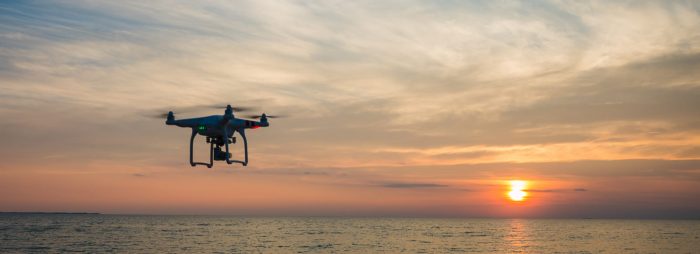We’ve all seen them used to capture stunning video footage. But did you know drones are also working hard on the front lines of science? Here’s a few ways scientists are using them.
1. Collecting whale snot
Yes, you read that right. Drones are being used to collect whale snot. Why, you might very reasonably ask?
The reason is that by using a drone to fly through the whale’s blowhole-spray, the scientists can collect samples in a non-invasive way. Previously, the standard way to get ideas about whale health was to chase them in a boat and get a skin biopsy using a dart or a breath sample using a long pole, both of which are obviously stressful for the whale, not to mention dangerous for the humans.
The technique is already paying dividends, yielding new information about the whales’ microbiome.
2. Monitoring sea ice
Sea ice is one of the main ways we can monitor the effects of climate change. But of course, if you want to study sea ice you need to go to places where it’s cold enough for the sea to freeze. That brings some challenges and even dangers, which drones are helping to work around.
Drones can go to places which are too dangerous for humans, such as areas where the ice is too thin. Drones also have three big advantages over satellite images – they can stay under cloud cover, it’s possible to change the instruments they carry, and they are much more flexible in what areas they can photograph and when.
This makes it possible to study the rapidly-changing conditions of sea ice in ways that were previously impossible. To paraphrase pioneering drone-user James Maslanik, the same work can be done while sitting in a nice warm hut.
3. Studying orangutans and deforestation
Sumatran orangutans are a critically endangered species. Their habitat is being destroyed by deforestation, so it’s vital that scientists are able to study both the orangutans and the deforestation. Drones are one of the tools they’re using.
Drones are being used to spot individual orangutans and their nests, which makes it much easier for scientists to find and track them than it would be from the ground.
Drones also make it possible to survey far greater areas of land and find issues like illegal logging or plantations which are expanding outside their designated areas.
Studying orangutans in Sumatra has become even more critical recently with the discovery of a new species on the island, the Tapanuli orangutan.
4. Surveying coral reefs
Drones are being used extensively to survey coral reefs. At the Great Barrier Reef, they’re being used to help study the ecosystem, while in the Caribbean a specially-designed system is being used to map reefs from both above and below the water’s surface.
As with sea ice, drones have advantages over satellites in terms of flexibility and availability, so they give scientists a much clearer picture of what’s happening on the delicate reefs.
With coral reefs being so imperilled by climate change, the increased monitoring ability provided by drones could have a huge role to play.
5. Monitoring Antarctic mosses
They don’t sound terribly exciting, granted. But mosses are kind of like the Antarctic equivalent of coral reefs in that they are very sensitive to changes in the environment, so monitoring them is actually very important.
Using drones to monitor the mosses saves scientists from travelling around difficult terrain in hazardous conditions, which helps protect fragile ecosystems and makes it a lot easier to get timely data.
Header image by Aaron Burden.
This article was written as part of my November writing challenge, a NaNoWriMo-inspired attempt to write one short, snappy article a day in November. Please excuse brevity, but let me know if I’ve missed anything important!
